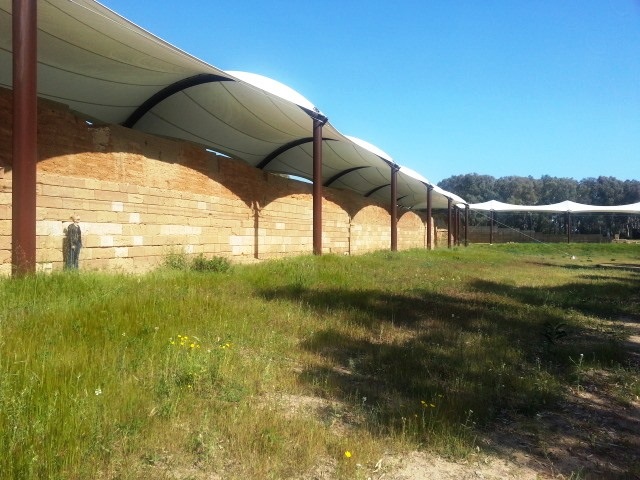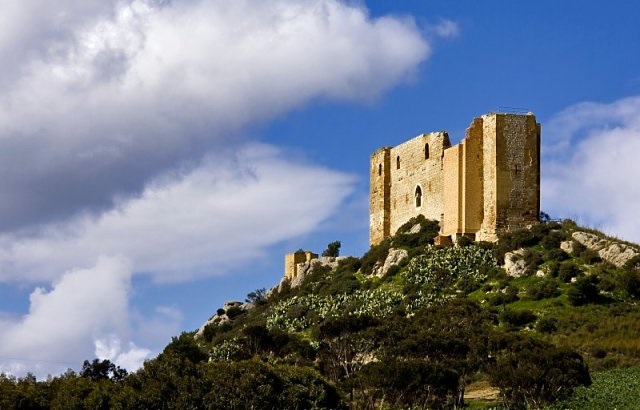GELA

Gela Mur Grec
Le fortificazioni greche di Gela, meglio conosciute come Mura timoleontee di Capo Soprano, costituiscono un'importantissima testimonianza archeologica del sistema difensivo che cingeva la collina sulla quale sorgeva l'antica città greca di Gela, fondata da coloni di Rodi e Creta nel 689 e definitivamente distrutta nel 282 a.C.
Les fortifications grecques de Gela, mieux connu comme Murs de Timoleon Murs du Capo Soprano, constituent un très important témoignage archéologique du système de défense qui entourait la colline sur laquelle se trouvait l'ancienne ville grecque de Gela, fondée par des colons de Rhodes et de Crète en 689 est définitivement détruit en 282 avant JC
The Greek fortifications of Gela, better known as Walls of Timoleon Walls of Capo Soprano, constitute a very important archaeological evidence of the defense system which surrounded the hill on which was the ancient Greek city of Gela, founded by settlers of Rhodes and Of Crete in 689 is definitely destroyed in 282 BC
Les fortifications grecques de Gela, mieux connu comme Murs de Timoleon Murs du Capo Soprano, constituent un très important témoignage archéologique du système de défense qui entourait la colline sur laquelle se trouvait l'ancienne ville grecque de Gela, fondée par des colons de Rhodes et de Crète en 689 est définitivement détruit en 282 avant JC
The Greek fortifications of Gela, better known as Walls of Timoleon Walls of Capo Soprano, constitute a very important archaeological evidence of the defense system which surrounded the hill on which was the ancient Greek city of Gela, founded by settlers of Rhodes and Of Crete in 689 is definitely destroyed in 282 BC

Gela il Castelluccio
Il Castelluccio di Gela
Le prime testimonianze storiche documentante risalgono al 1143 quando il conte Simone di Butera, con atto scritto, donò la fortezza all’abate del Monastero di San Nicolò di Catania. Alla fine del XIV sec. l'edificio sarebbe stato assegnato da re Martino al Nobile Ruggero Impanella. In epoche successive il Castelluccio sarebbe passato patrimonio degli Aragona di Terranova e poi ai Pignatelli.
La première date historiques documentant le château remonte à 1143 quand le comte Simon de Butera, dans un écrit, a fait don de la forteresse à l'abbé du monastère de Saint-Nicolas de Catania. A la fin du XIVe siècle. le bâtiment serait attribué par le roi Martin au Noble Roger Impanella. Dans les temps plus tard, le Castelluccio passera en héritage au conte Aragona , puis à Pignatelli.
The first historical date documenting the castle dates back to 1143 when Count Simon de Butera, in a writing, donated the fortress to the abbot of the monastery of St. Nicholas of Catania. At the end of the fourteenth century. The building would be attributed by King Martin to the Noble Roger Impanella. In later times, the Castelluccio will pass in inheritance to the Aragona tale, then to Pignatelli.
Le prime testimonianze storiche documentante risalgono al 1143 quando il conte Simone di Butera, con atto scritto, donò la fortezza all’abate del Monastero di San Nicolò di Catania. Alla fine del XIV sec. l'edificio sarebbe stato assegnato da re Martino al Nobile Ruggero Impanella. In epoche successive il Castelluccio sarebbe passato patrimonio degli Aragona di Terranova e poi ai Pignatelli.
La première date historiques documentant le château remonte à 1143 quand le comte Simon de Butera, dans un écrit, a fait don de la forteresse à l'abbé du monastère de Saint-Nicolas de Catania. A la fin du XIVe siècle. le bâtiment serait attribué par le roi Martin au Noble Roger Impanella. Dans les temps plus tard, le Castelluccio passera en héritage au conte Aragona , puis à Pignatelli.
The first historical date documenting the castle dates back to 1143 when Count Simon de Butera, in a writing, donated the fortress to the abbot of the monastery of St. Nicholas of Catania. At the end of the fourteenth century. The building would be attributed by King Martin to the Noble Roger Impanella. In later times, the Castelluccio will pass in inheritance to the Aragona tale, then to Pignatelli.
